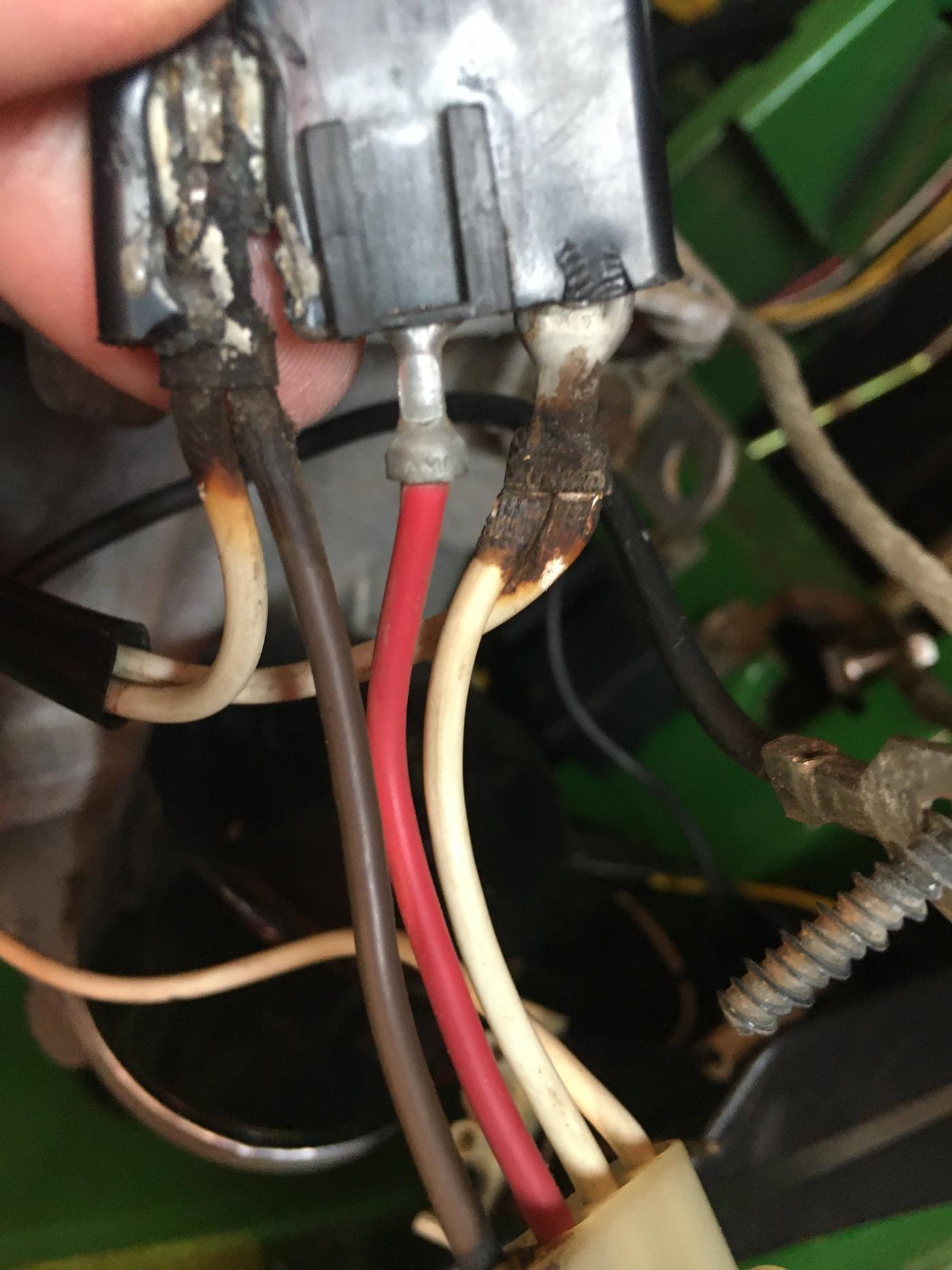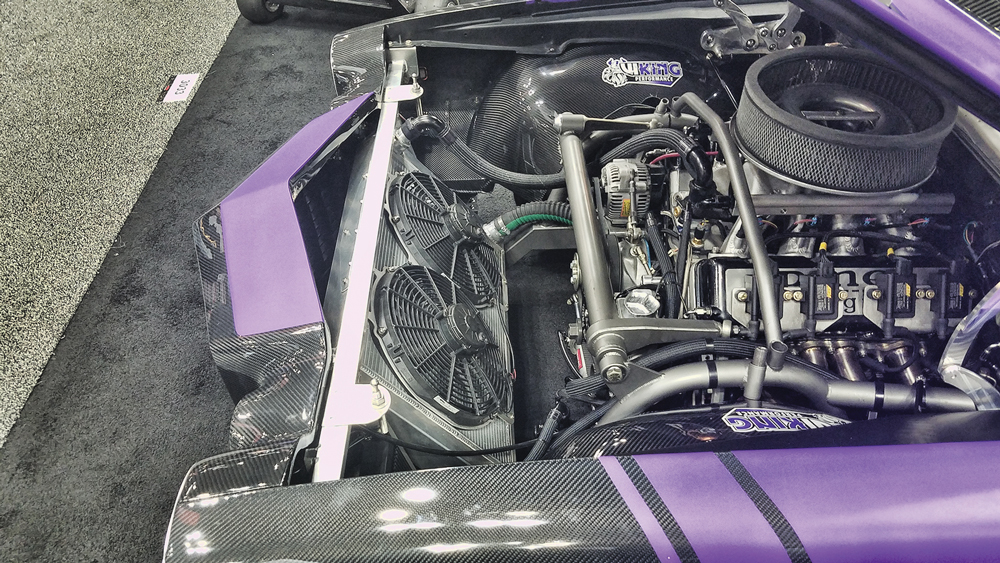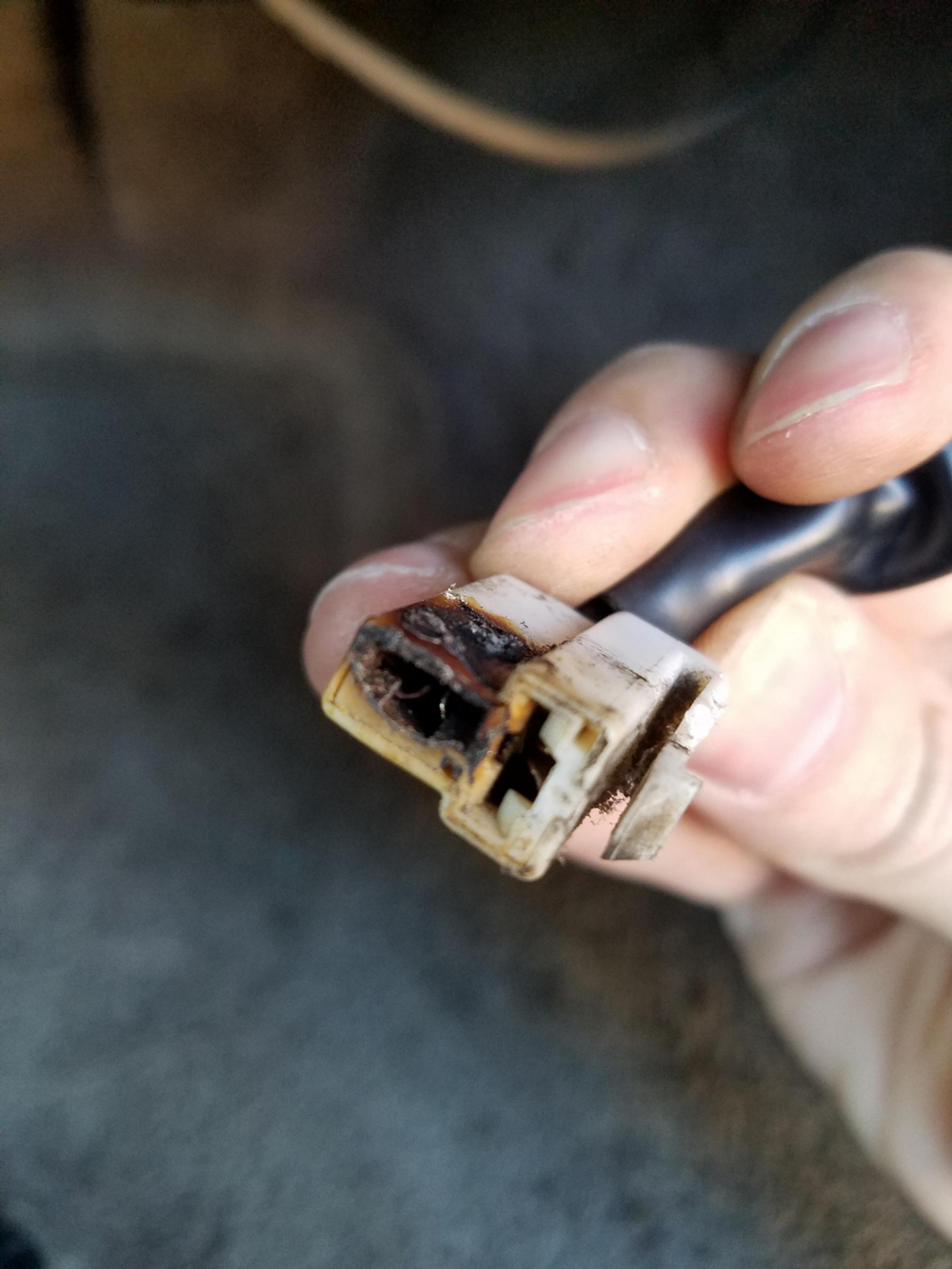Stop Doing That…Do This Instead: Wiring Fans

Pictured here, a customer had used a self-tapping screw to try and ground the relay to the same mounting tab that comes off the top of it, explained our source at Derale Performance. “The resistance from that bad ground caused a heat build-up, which made it all melt,” he added.
Incorrect technique can result in any number of problems, from burning wires to catastrophic component failure. Here’s how to avoid some of the most common miscues.
What can go wrong if a race car’s fan isn’t correctly wired? Beyond the obvious problem of the fan not working, “it can burn up wires, blow fuses and breakers, and short-circuit the motor on the fan,” said Cam Brandt of Derale Performance, Los Angeles, California. Brandt, and Brent Chuck of SPAL Automotive USA in Ankeny, Iowa, spoke with us recently about the common mistakes that can happen when customers wire their race car fans incorrectly, and how to fix them.
Going to Ground
“People worry about the positive wire, but they don’t care as much about the ground wire,” said Chuck. “They don’t consider that it needs to be a continuous loop all the way back to the battery. So it’s common for people to ground the fan at the radiator support or the engine block. Which is not necessarily a bad thing, but they need to make sure whatever is grounding the engine block back to the battery is sufficient to handle the current draw of the fan as well. They have to think about the whole loop, from the positive terminal back to the negative terminal.”
An improper ground “can cause the fan to not run at full speed, or it can burn out relays or whatever electronics are operating it,” said Brandt. “The most common faulty ground we see is when people use a self-tapping screw into any sheet metal that’s not really cleaned or prepared. It increases the resistance and builds a lot of heat, which causes numerous problems.” A better approach, he said, is “grounding to the battery directly if possible, or having a welded stud on the chassis frame or whatever they might be working with. When it’s welded and properly cleaned and prepared, it’s a more durable ground that will have a better connection.”
Battery Relocation
“Amperage drop is a problem,” Brandt said, when a racer relocates the car’s battery, putting distance between the fan and its power source. “The best solution is a larger gauge wire” from the battery, he noted. “That’s preferable to pulling power from an existing large wire. People tend to go off of a starter solenoid or alternator wire. The problem with that is it’s unconditioned voltage. It’s spiking, dropping, dependent on the load of the engine. It’s not providing consistent voltage, which could cause a spike that could damage the fan’s electronics.”

There is no rule of thumb to determine the proper wire gauge in this situation, Brandt said, because of the variables among race car applications.
“Amp draw determines wire size,” he said. “With a 10-amp fan they could get away with a 14-gauge wire at 15 feet coming from the battery. But for a 25- to 30-amp fan or bigger, they’re going to need a much larger wire size, depending on the distance. Bigger is generally better.”
Another variable is the size of the car in question, Brandt said. “Look at a 1967 Chevelle compared to a Miata. The length overall is entirely different, even if it’s in the trunk for both.” There are many resources available online to help determine the correct wire size based on amps and length. If the answer can’t be found there, Brandt and Chuck recommend calling the fan’s manufacturer and discussing the specific application to determine proper wire size.
One particular problem Chuck sees with battery relocation is when “people run an unprotected wire the whole length of the vehicle under the car. They don’t necessarily think about what could happen if the wire chafes or if there’s a ground short on that wire.” His recommendation is to use a battery relocation kit that “runs a jumper cable or a large wire through a fuse all the way to the front of the car. Then it would go to a junction block or something they could tie other stuff to.”
Making Connections
“Connections are the key,” Brandt said. “Crimp, solder, whatever their method is, connections are crucial in high-amperage applications like an electric fan. It is very important to verify that the connection is secure. We’ve had plenty of guys who call and swear up and down they know how to solder, and as soon as they pull on the wire, it separates.

“Any time you have a connection that’s bad, it creates an arc,” Brandt explained. “As the amperage gets higher, it gets hot and arcs within that connection. Even if it’s just the slightest little arc, it eventually creates more heat and then melts. Take a spade connector. If the parts aren’t tight—if they’re a cheap, loose connector—that’s enough in a higher amperage situation to create an arc, which can create serious heat and could ultimately cause a failure.
“There are lots of different crimp connectors out there,” Brandt added. “You don’t need to spend $1,000 on a crimp, and you certainly don’t want to get the cheapest junk out there either. Just use quality crimp connections and wire, and you will have a dependable cooling source race after race.”
“We tell people the best thing you can do with connectors is avoid dielectric grease or anything like that inside the connection because of the fan’s heavy current load,” Chuck said. “It can cause corrosion, it can cause arcing at the terminals, and it can cause the grease to wick up and down the wires. We’ve seen that in quite a few cases. As a fan motor runs, it creates a small vacuum inside the motor, and that vacuum can suck water or grease or whatever you have from the connector through wires all the way into the motor. Just use a good, clean, tight connection.”
Ultimately, Chuck said, “if you have any doubt, contact us. We can provide a lot more information if you tell us what fan you have. We’re available and open, trying to help everybody we can with what they’re working on.”
SOURCES
Derale Performance
derale.com
SPAL Automotive USA
spalusa.com
 MEMBERSHIP LOGIN
MEMBERSHIP LOGIN JOIN PRI
JOIN PRI


